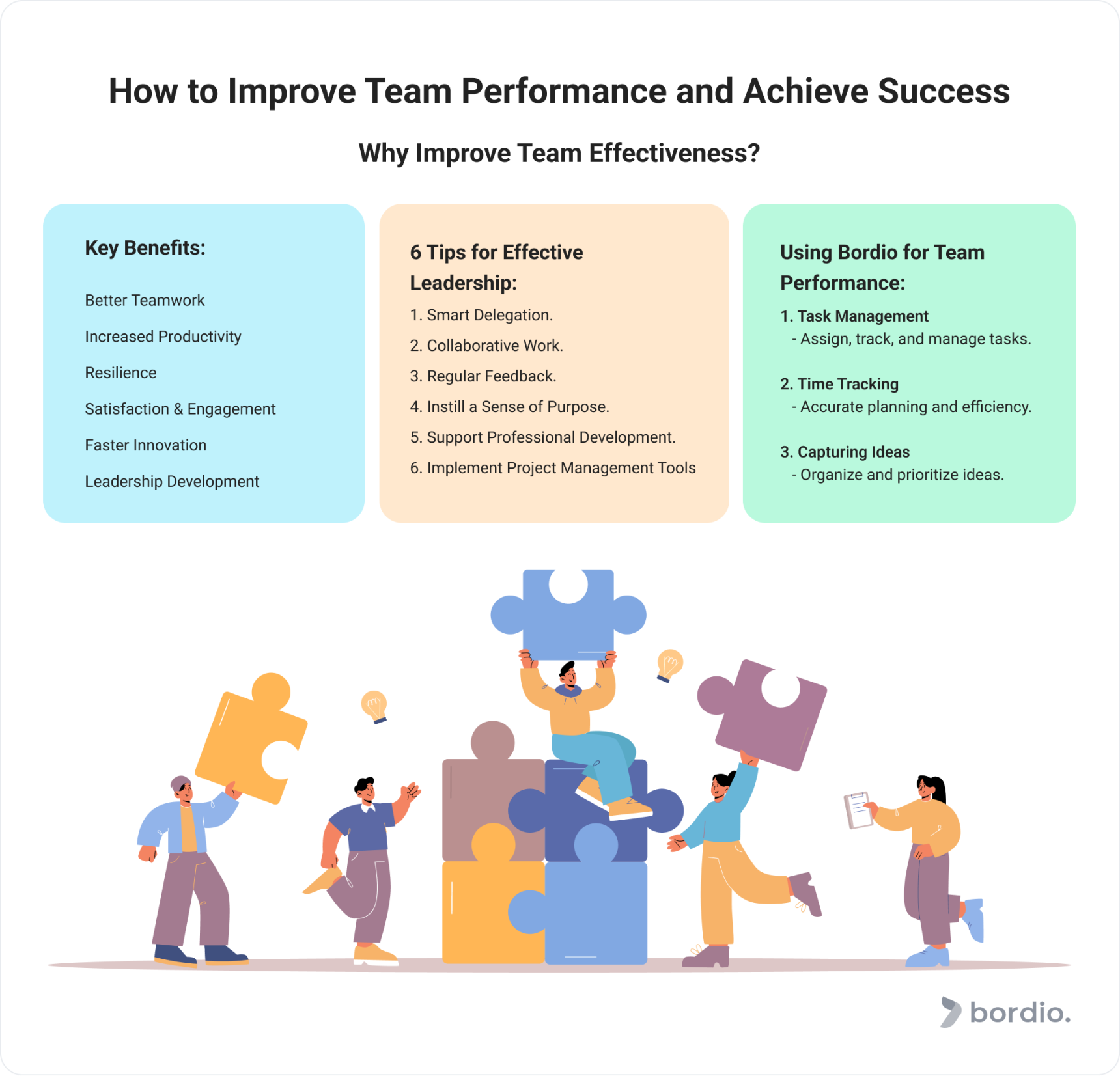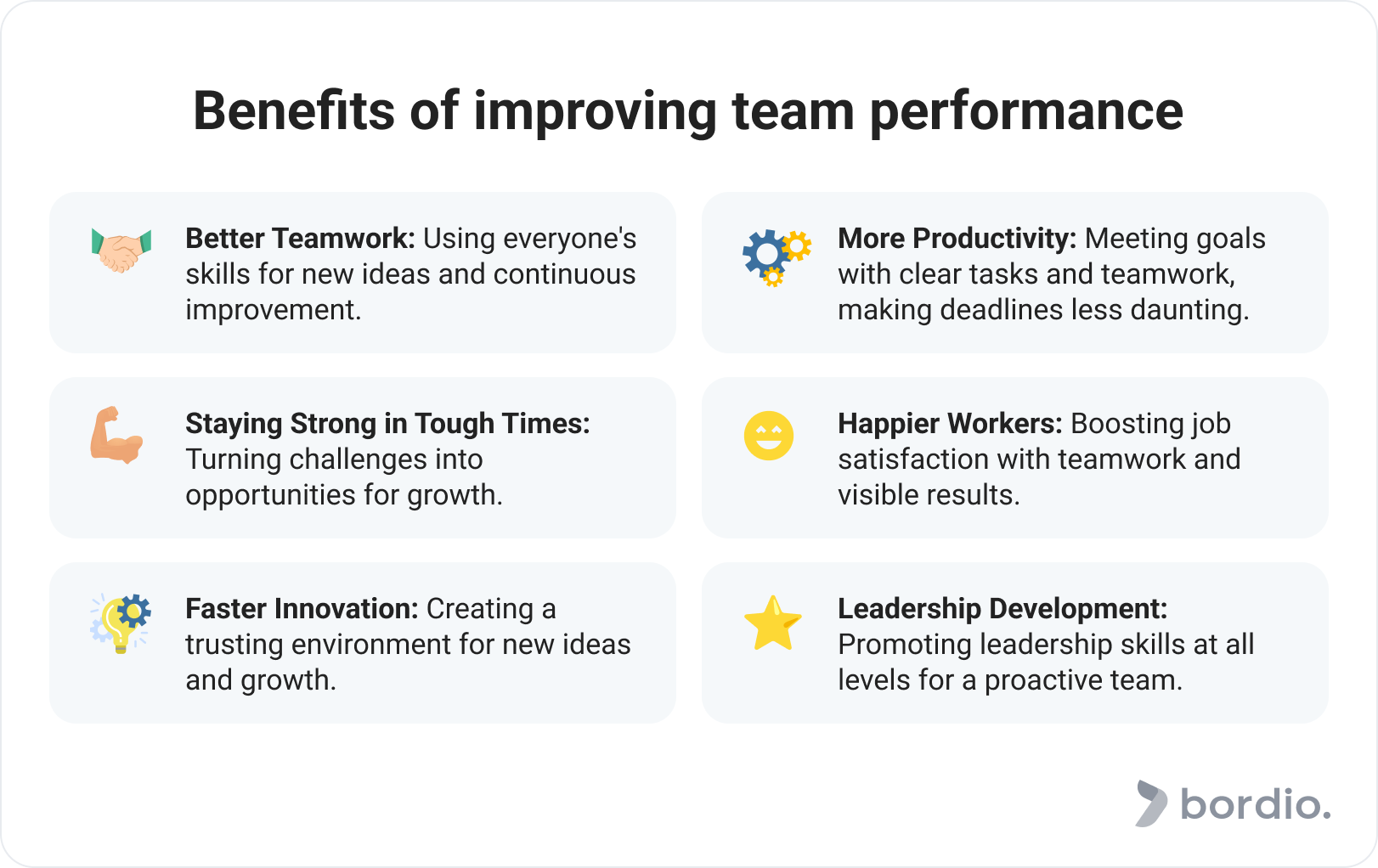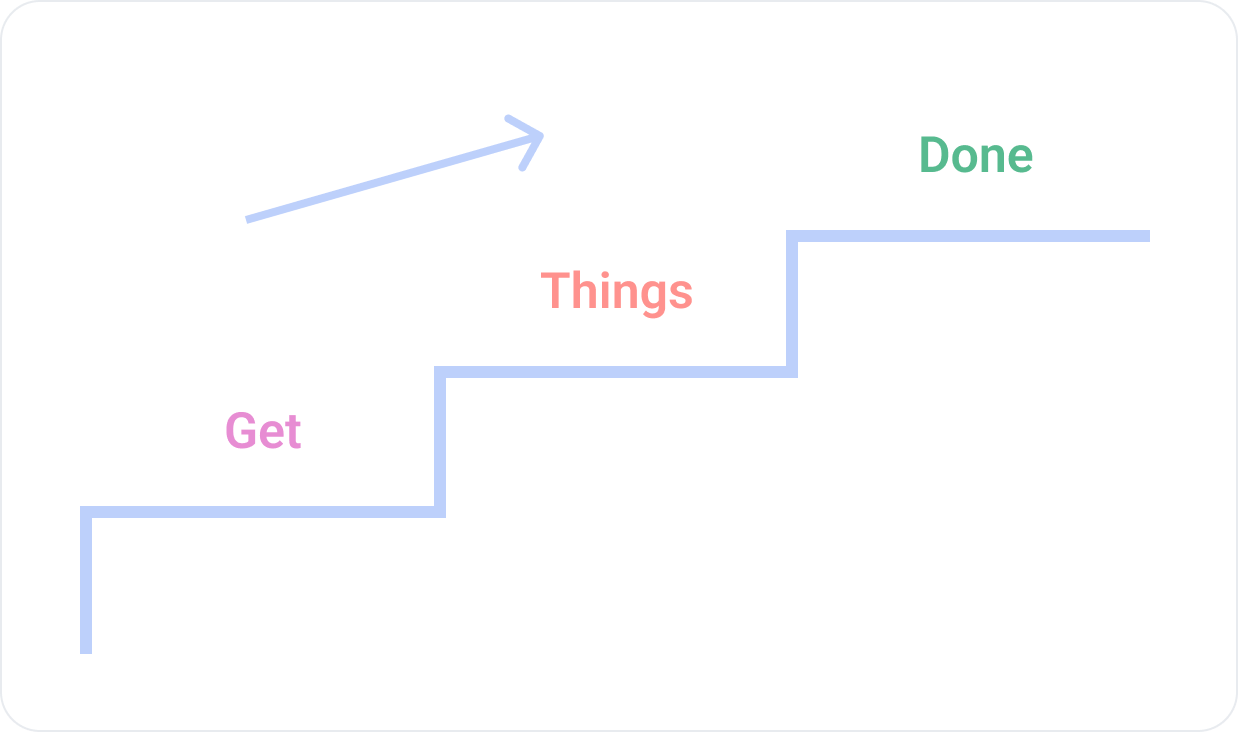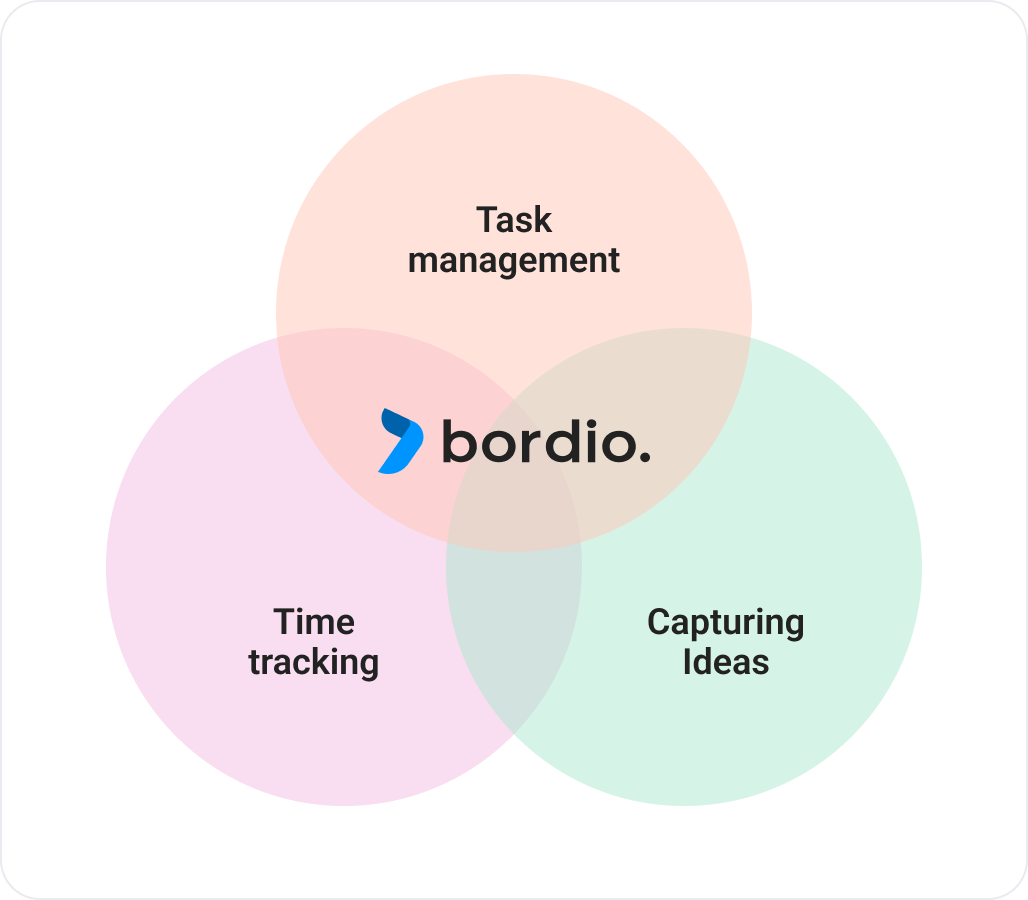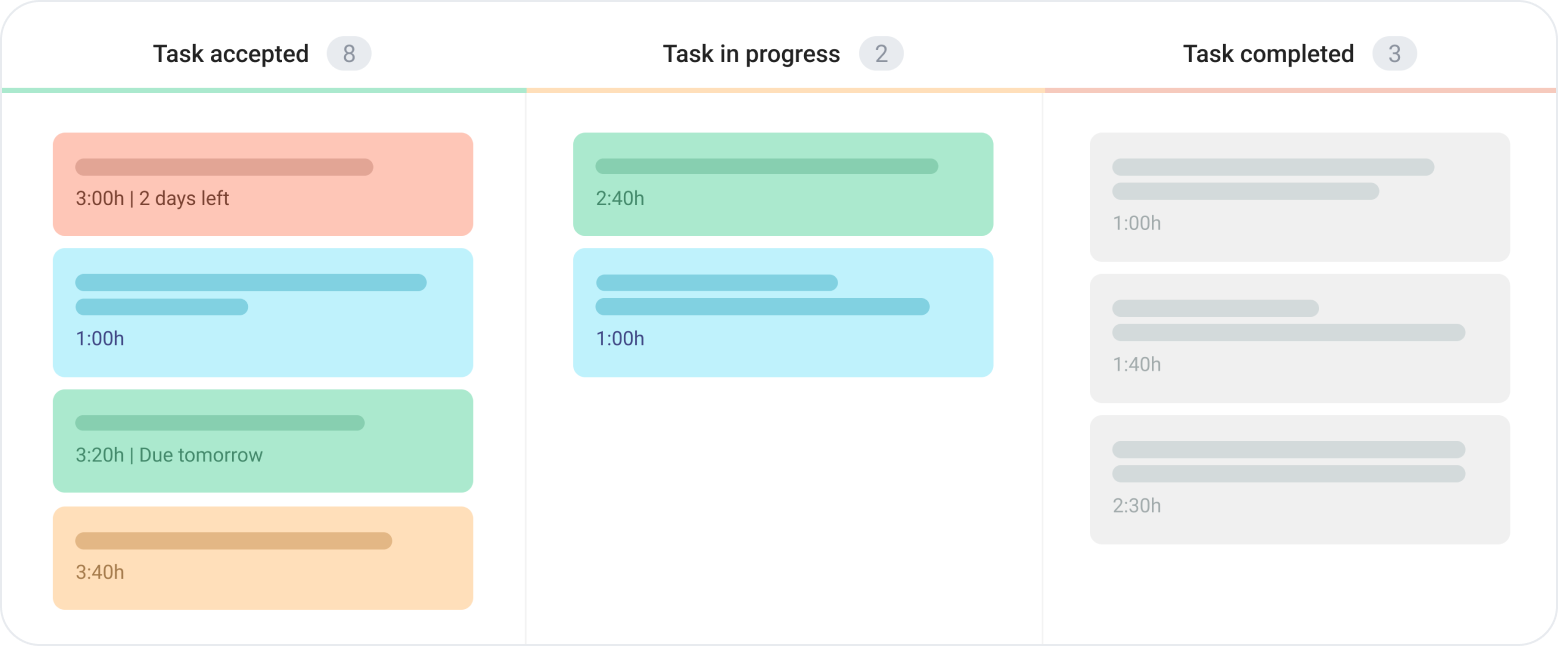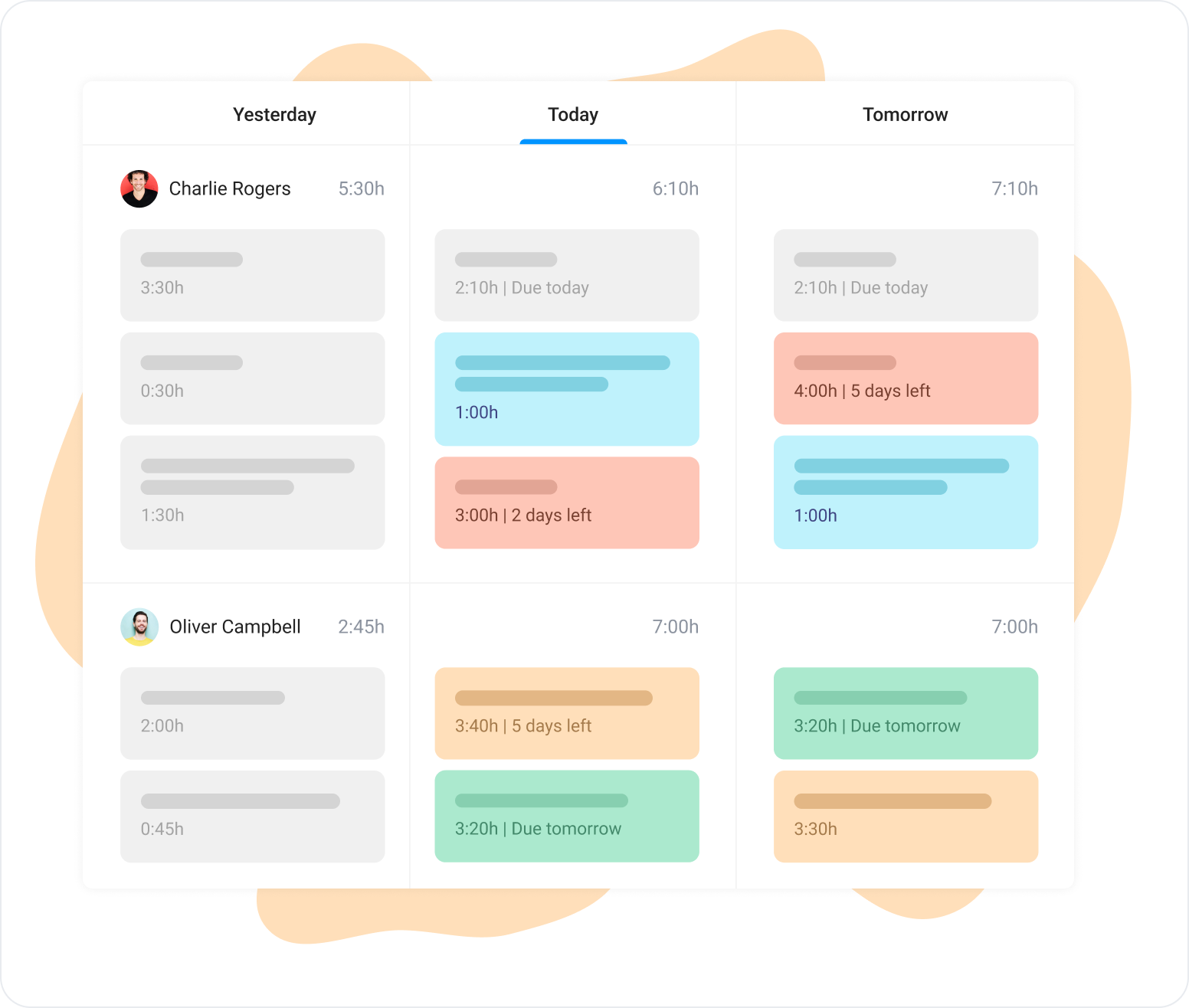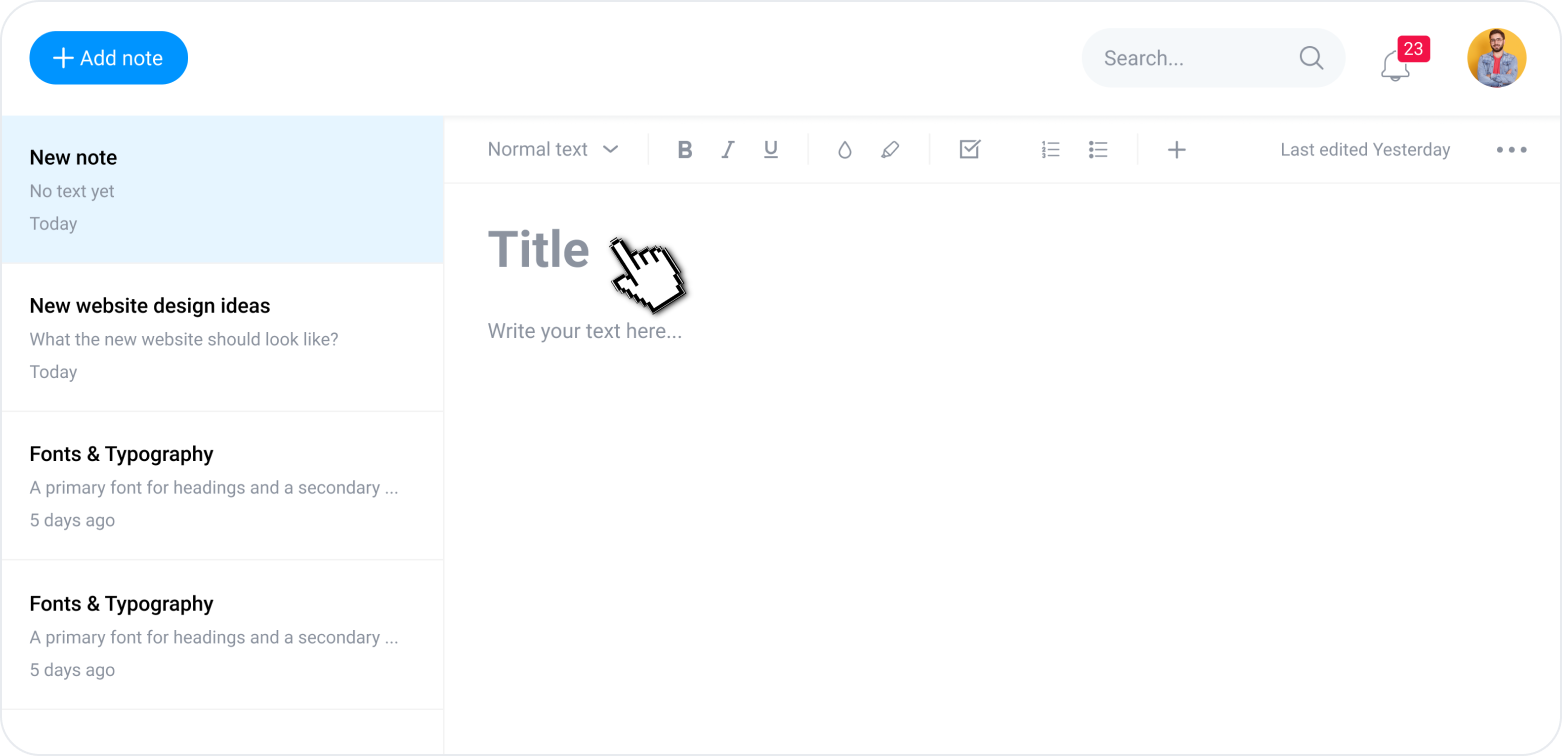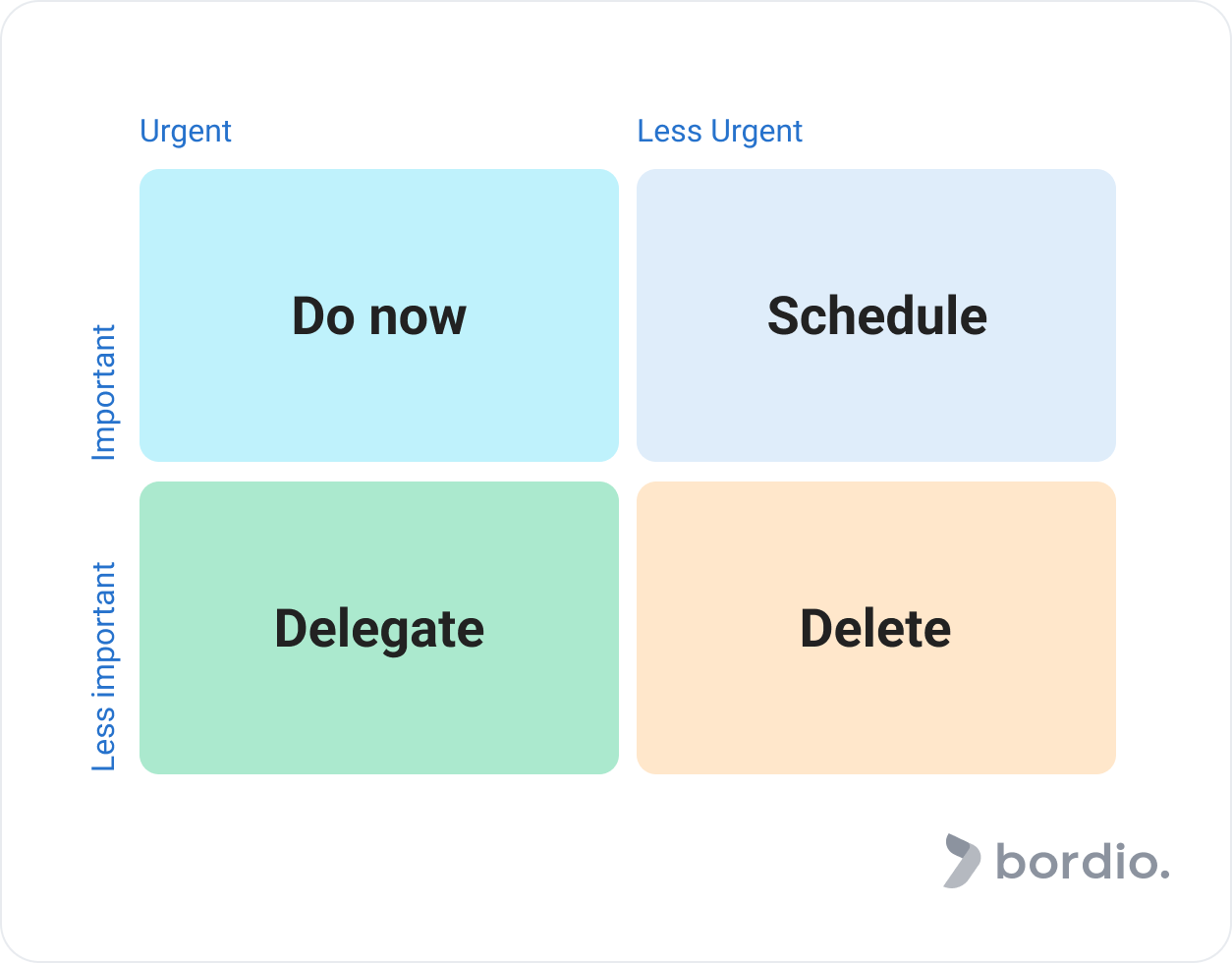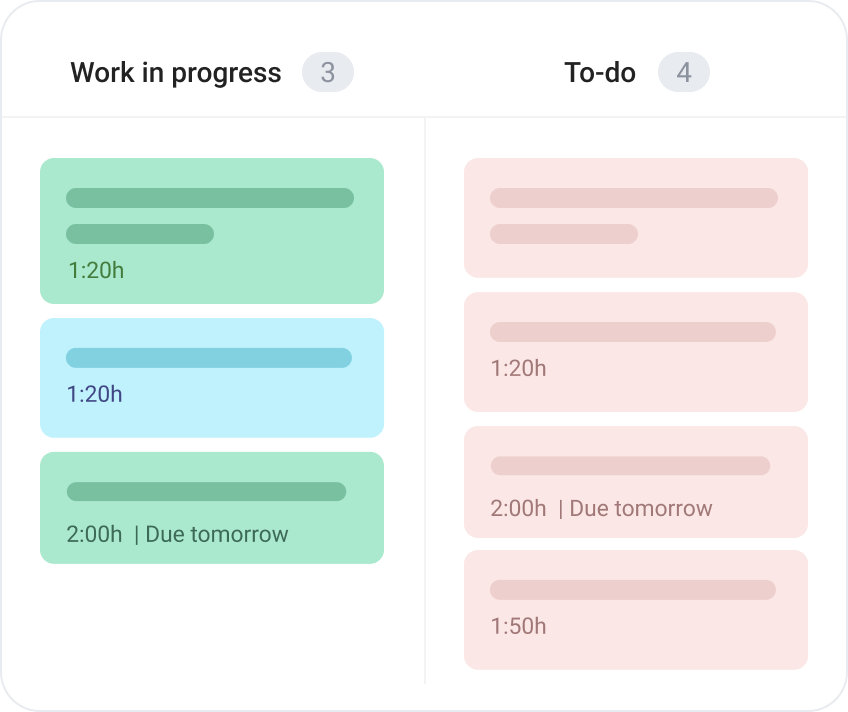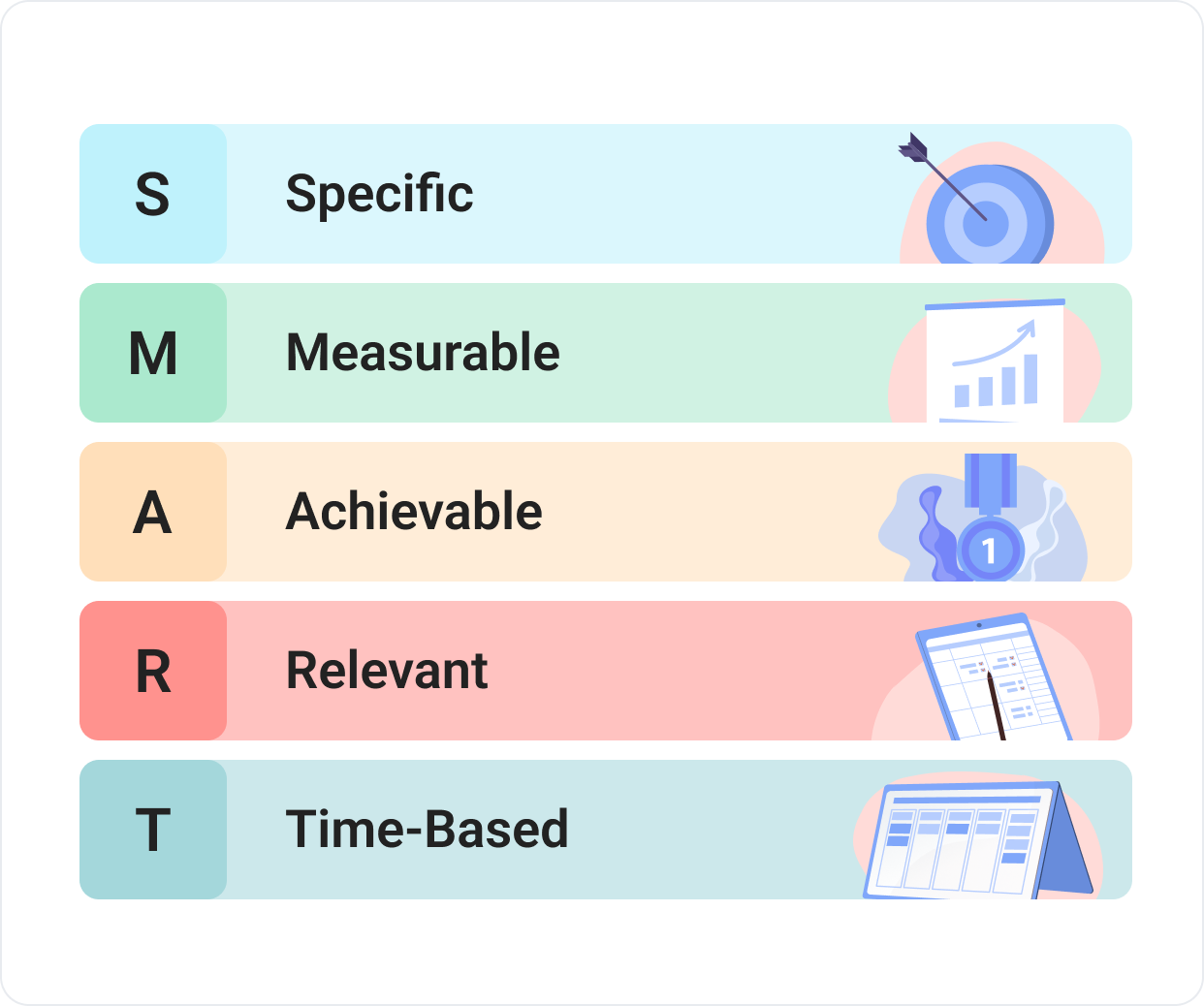Every manager or team leader wants to see an improvement in the team’s performance. The business’s success may depend on team productivity, but it can also provide difficulties for team leaders. With a significant and ambitious goal, how can you improve your team’s performance? How can you increase their productivity? And how do you maintain their motivation?
If you want your business to prosper, learn more about ways to boost your team’s performance and efficiency. Let’s find out team improvement ideas and techniques that can be used to improve team productivity, encourage team members to come up with new ideas and achievements, and keep the team motivated.
The sky is the limit – the importance of improving team performance
So, why is it so critical to improve your team’s effectiveness? When teams work really well together, they can tackle big challenges and push past obstacles that might stop others. It’s like you’re all flying high above problems. What other advantages await your team in this case?
1. Better teamwork
Each team member possesses a unique set of talents, creating a synergy that encourages the team to create innovative solutions and exceptional results. Like stars in a constellation, individual talents combine to form a vibrant and impressive teamwork. This is the kind of teamwork that many people want to achieve, and the key to it is continuous improvement.
2. Increased team productivity
When a team performs at its peak, productivity increases significantly. Effective teamwork, goals broken down into measurable tasks, and a shared commitment to achieving goals contribute to task accomplishment. Deadlines are no longer scary beasts for you! As a result, the group and organization advance via a series of successes.
3. Adversity-resistant mindset
A high-performing team is resilient in the face of adversity, just as a sailor is when crossing a rough sea. Failure becomes a stepping stone to greater achievements, and adversity becomes a chance for growth. This resilience demonstrates the value of teamwork and is one reason why it is important to enhance your team’s performance.
4. Employee satisfaction and engagement
Strengthening teamwork, improving team skills, and increasing employee satisfaction go hand in hand. Job satisfaction increases significantly when people feel that their contributions matter, collaborate effectively, and see the results of their labor. And to remain a significant contributor to your team, you must improve your work together.
5. Faster innovation
High-performing teams are always looking for new challenges and difficulties to overcome to achieve new achievements. Their leader must create a culture of trust, self-improvement, and collaboration, where people are not afraid to speak their minds and make mistakes. They will continuously improve and develop new, unique ideas – fostering creativity and innovation.
6. Leadership Development
Leadership development at all levels is necessary to improve team performance. Not only the manager but also the team members must have leadership skills because when leadership skills are demonstrated, team members take responsibility and actively participate in their work. This dispersed leadership creates an environment where everyone is a leader capable of leading the team to success.
The main idea of team effectiveness:
The extent to which your team’s work impacts the long-term achievement of corporate goals is measured by team effectiveness. An effective team, for example, doesn’t always complete every sprint at 100% and burn through all the backlog. Instead, you come to realize that getting things right and working smart is more important than working hard.
But this is where most teams fail. For your team to be truly productive, it must have a strong leader in control – but with a certain amount of freedom and security. With a good leader, it’s easy to improve and feel that “the sky is the limit”.
Getting Things Done: a helpful strategy to improve team performance
And now you think, “How do I improve team performance myself? What do I do?” But don’t you worry; we want to share a hack with you – it is a “Getting Things Done” management strategy.
GTD is a beneficial time management strategy that can significantly improve team performance – precisely what we want to achieve. Developed by productivity expert David Allen, GTD offers a comprehensive framework for organizing tasks and eliminating mental clutter. It’s an invaluable tool for teams seeking efficiency and productivity without stress.
How does it work? The GTD methodology includes five key steps: capture, clarify, organize, reflect, and engage. These steps provide a structured approach that helps teams prioritize and manage their workload more effectively.
Team members collect thoughts and tasks during the capture phase so that nothing is missed. This initial phase promotes proactive thinking and ensures every team member’s opinion is considered. Once you have collected ideas and tasks, it is the turn of refinement. This involves analyzing all the topics raised and determining the next step that can be taken for each one.
The subsequent steps – refining and organizing – involve sorting and categorizing tasks based on their nature, urgency, and complexity. By breaking down complex projects into more minor, manageable components, teams can improve their ability to tackle tasks systematically. Emphasizing immediate action on tasks that take two minutes or less reduces the likelihood that smaller tasks will pile up and cause unnecessary stress.
Ultimately, it’s time to take action on all the tasks sorted in the previous steps. This is how the GTD strategy works to make it easier for you to accomplish any small or large task.
How can team performance be improved by using Bordio?
Bordio is a project management tool made to increase team productivity and simplify project management. Let’s examine the characteristics that make Bordio crucial to improving team effectiveness and forming an effective team.
#1 Task management
Bordio provides the ability to manage tasks online via computer or phone. A user-friendly user interface allows teams to assign, create, and manage tasks efficiently. The work can be assigned by the supervisor, who also chooses the deadline and enters it into the time management tool. The manager can also leave descriptions and other useful information in the task description before assigning it to an employee.
Then, team members can start performing the task and change its status during their work. For example, a task can start as “Task accepted,” followed by “Task in progress,” and finally, “Task completed.” Managers will be able to monitor the progress of the task constantly and how much time the member has spent on it.
#2 Time tracking
The time tracking feature ensures accurate planning, improves team efficiency, and ensures that the appropriate amount of time is allocated to each task. A manager can assign a certain amount of time to a task and then see how long the task actually took, thus evaluating not only the employee’s performance but also his own planning.
Following the previous point, Bordio was also a good helper when identifying the overall team performance. It can calculate the time spent on activities specified in the tracker. The total workload counter provides information about time spent on tasks and events, allowing managers and team leaders to assess the workload of the whole team at a glance. This bird’s eye view allowed strategic decisions, helping realize the team’s effectiveness.
#3 Capturing Ideas
Speaking of events, Bordio allows the team to highlight and write down the meeting’s agenda directly on the event card. This ensures that every participant is relevant to the meeting. All members will read it and prepare for a meeting in advance, which promotes completeness and productivity.
After the meeting, Bordio allows the team to document the results of the meeting – decisions, assigned actions, or any other essential findings right in Notes. As soon as ideas overflow, team members can use the Waiting List, write their ideas for tasks, and structure them later. In the task card, they will be able to describe what they mean in more detail, leave references, and make it easier for the supervisor and themselves to understand the idea in the future. These actions will keep employees motivated and engaged in work.
6 Tips to improve team performance
Half of the success in teamwork is a good leader who can guide the team on the right path like a compass. So, let’s look at some useful tips that are important to use if you want to be a successful team leader.
1. Smart delegation
As a good project manager, you should trust your team with challenging projects and tasks, but how will you maintain their effectiveness? That’s what task prioritization techniques are for. In simple words, it means that before assigning tasks, you need to identify high-priority tasks and analyze the strengths and weaknesses of each team member. Using the prioritization techniques of the Eisenhower Matrix or Risk Assessment Matrix helps determine which tasks are paramount.
Then, you need to decide and assign each person tasks according to their strengths and provide resources and time. If a person is doing a task that they are not used to or is too difficult for them, it is critical to give them time to learn, make mistakes to improve their skills, and do not forget about the feedback process!
2. Collaborative work
Involve team members in the decision-making process to find innovative solutions and encourage constructive discussions to consider different points of view. In a dispute, truth is born! But of course, it is essential not to overdo it and to maintain an atmosphere of cooperation in pursuit of common goals. Give attentive listening and empathy in team communications the first priority.
Communicate honestly about issues and create a cooperative environment. Encourage employees to communicate with each other, not just through the manager. Team building activities can be conducted to remove awkwardness and alienation in the team.
3. Regular feedback
Among other things, giving team members regular constructive criticism is important. To improve working relationships, be detailed and practical. When you do, team members will feel valued. When receiving feedback, use a sandwich strategy: first tell them about the positive aspect, then the issue has to be solved, and then be cheerful again. The person will be able to identify their strengths and weaknesses better and begin to address them; at the same time, they won’t feel down because of their weakness and failure.
To find areas where you can improve, it is important to ask for advice from colleagues. In addition to giving feedback, you have to actively seek feedback from team members to identify areas for improvement in your work.
4. Instill a sense of purpose
Make sure what you are doing is meaningful – open communication about goals will increase the motivation of each employee. Team members need to understand the meaning of their work and the overall purpose of the organization to feel the work is meaningful. Happiness and a sense of motivation positively impact overall purpose and productivity. You can link personal endeavors to company goals and encourage people by being sincere. Once explained, the overall company goal should be broken down into smaller and more understandable goals, which you will divide into manageable tasks.
5. Support professional development
Encourage continuous learning and skill development for employees to increase team efficiency. This applies to both feedback and practice. For simplicity, you can use online courses for flexible learning so employees can improve their skills without spending extra work time on them. If you think offline training is more suitable, you can organize training with speakers and meetings where everyone shares their knowledge(another point to team communication). Then, focus on your development to strengthen your leadership skills, take courses, provide examples, and improve employee engagement.
6. Implement the project management tool
Project management tools are something that can’t be left out when it comes to improving team productivity. Management tools can be compared to indispensable help from a faithful companion. Instead of paper-based analogs, it gives you more possibilities for planning and controlling projects. With the right tools, you can keep all tasks and project information in one place, create to-do lists for work, and view project processes and workload levels. Bordio is a work management software with all the features for the above that will work as a great task planner and online calendar.
Creative team-building ideas to improve team performance
As more and more companies realize how important it is to maintain a positive work culture, creative team-building activities are becoming an integral part of creating a motivated and collaborative workforce. Take a lovely vacation in a coworking space and avoid the usual office routine! We want to offer you exciting solutions for team building:
- Escape Room Challenge
Take your team to an escape room challenge to test your team’s ability to solve problems together. Participants are locked in a themed area and must cooperate in interpreting clues, working puzzles, and solving the mystery to ‘escape the room.’ This improves communication and critical thinking of members in addition to fostering collaboration.
- Team Cooking Class
In a team cooking class, explore your creative side in the kitchen. Just like the Escape Room Challenge variant, your team will work as a team for results – which will improve their ability to work just like during burning deadlines.
- Outdoor Adventure
A natural backdrop is ideal for team building. Whether a day hike or a weekend camping trip, a nature retreat fosters resilience and trust. Conquering nature together builds trust between coworkers and will foster a good work environment in the future.
- Costume-themed day
A costume day will boost participants’ spirits, remove tensions, and engage their imagination. Sitting down and getting creative to surprise your colleagues and bond even more will be helpful!
- Art or sports together
Organizing a painting or sculpting session where team members work together to create a collective masterpiece can also be arranged for a gym and health challenge. Your group will have closer communication when they return to work. These experiences go beyond professional growth, fostering a supportive and cooperative work atmosphere that significantly enhances team productivity.
Using SMART goals for better team performance(examples)
SMART stands for Specific, Measurable, Achievable, Relevant and Time-bound. It is a system that helps define and monitor team goals effectively. SMART offers an organized method to ensure clarity, focus, and achievability.
For example, how do you use this technique if you run a b2b marketing company? That’s how you build tasks around that technique: If your goal is to increase brand awareness, then the task has to be more specific:
“1. Launch a content marketing campaign that leads to increased brand awareness.”
Then, you’ll outline the details and make this objective measurable, relevant, and achievable. Relevance is how well your goal fits with company policy, and measurability and achievability are how realistic it is to achieve the goal and how you will realize that the goal has been achieved. So, if you add measurability to the objective, it will be more like – “1. Launch a content marketing campaign that will increase brand awareness by 20 percent.” Now, for the objective to be realistic: “2. The marketing team must start building out the campaign.” And add time constraints: “3. Finish the task by the end of the quarter.”
Now you have an overall goal: By the end of the quarter, launch a content marketing campaign with a 20 percent increase in brand awareness. There’s also a small task: The marketing team needs to start building out the campaign. Ideally, the task should be divided into more detailed tasks and handed over to the appropriate team.
Final Thoughts on Improving Team Performance
Improving team performance is an ongoing process that requires careful preparation and a desire to create a positive work environment. By exploring several topics, such as the value of collaboration, the use of Bordio tools, the application of SMART goals, and the GTD approach, we have found that success largely depends on a constant desire to improve. Also, the importance of skillful leadership, clear communication, and group decision-making cannot be overemphasized.
Remember, the sky is the limit when it comes to team achievement. Building a strong, committed, and driven workforce will influence your company’s future success in addition to increasing output. Therefore, never undervalue the importance of ongoing education and have an open mind to new ideas and tactics that might help your team reach new heights in team performance.

